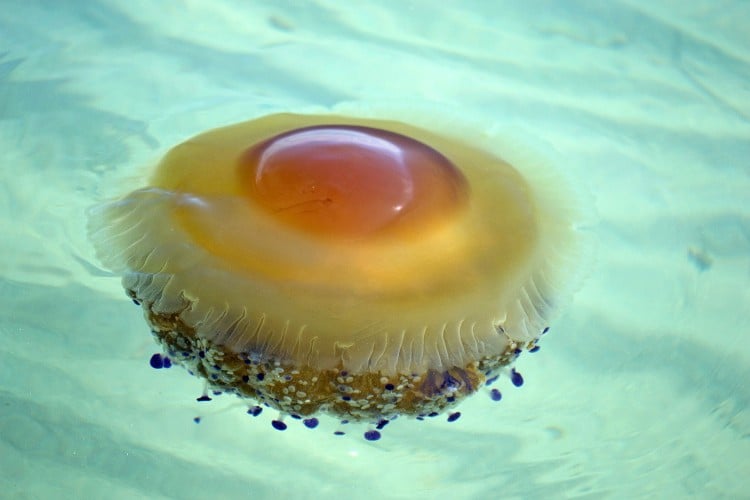A TYPE of jellyfish that looks like a fried egg has made an earlier than normal appearance on Alicante province beaches.
Known as Cotylorhiza tuberculata, the fried egg jellyfish typically arrives in late August.
Institute of Coastal Ecology researcher, Juan Guillen, said: “The presence of this type of organism is common on the Alicante coast but the change this year is that it has appeared earlier from south- going up the coast due to changes in sea currents and wind patterns.”
READ MORE:
- Thousands of fried egg jellyfish take over Murcia’s coast
- EGG-TASTIC! Incredible ‘fried egg jellyfish’ spotted off coast of Spain’s Formentera

The unusually large size of these jellyfish is something that has been catching the eye of maritime experts.
“An extraordinary thing is that years ago these specimens had a diameter of less than 10 cms and the ones we are seeing now are large- some exceeding 15 cms, “ Guillen said.
“This suggests the reproductive cycle of the jellyfish is advanced and we are going to have them all summer- even through to November,” he added.
The expert suggests the growth may be down to temperature changes.
He told beach goers not to be worried as though the fried egg jellyfish look very striking, they are not dangerous but recommended that they be ‘respected and not touched.”
The Institute of Coastal Ecology has reminded bathers that they should not be alarmed by the presence of such organisms and pay attention to rescue and lifeguard services.
Insitute director, Gabriel Soler, said: “The lifeguards are aware of such situations and put up flags to report the presence of jellyfish.”
“With the fried egg species, there is little more that mild discomfort if you make contact with them, compared to stinging jellyfish where precautions need to be greater.”
Stinging jellyfish have been reported in the Javea and Alicante areas- having come over from the Balearic Islands.








